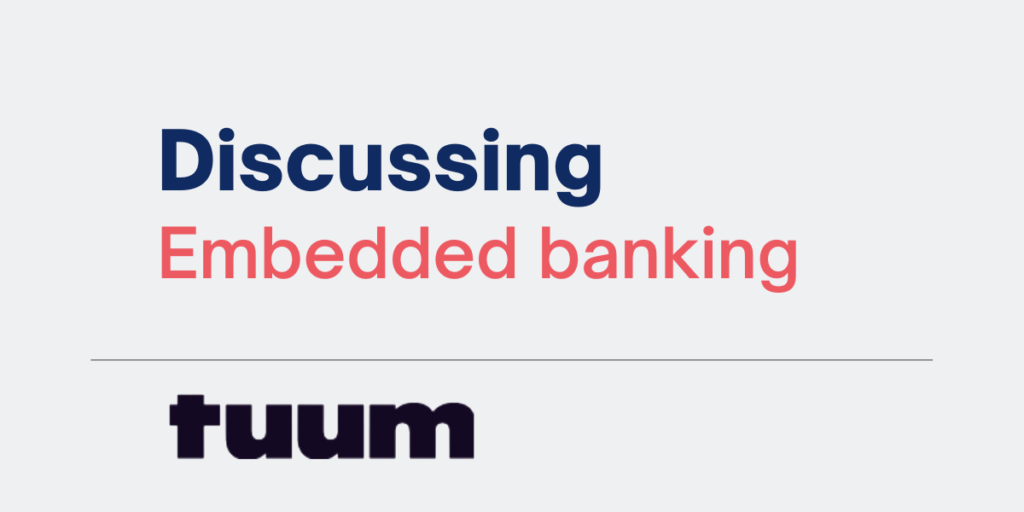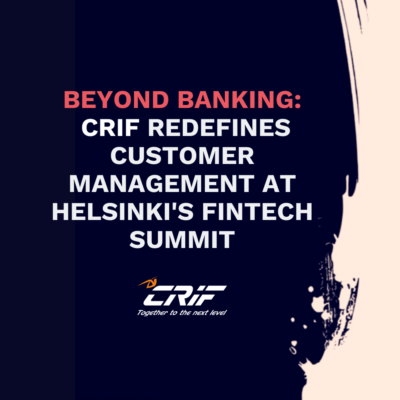The age of embedded banking has arrived. Modern technologies are supercharging a fresh wave of innovation in the financial services sector, as many financial institutions move to tackle their digital transformation objectives with increased urgency.
As a result of increasing market pressures from multiple fronts, the need for diversification and identification of new revenue streams has never been greater, and those who can effectively evolve their business with the aid of modern technologies stand to come out on top.
With new technologies also comes new opportunities for innovation, new distribution channels, new partnership opportunities: entirely new ways of doing business. We have mapped the four key archetypes for modern financial institutions, featuring open platforms and embedded financial services.
This research has been conducted as part of a wider investigation into the financial services sector and how technology enables true digital transformation in banking. For more insights, download Tuum’s recently published whitepaper here.
Intelligent Digital Bank
Intelligent digital banks effectively utilise modern technologies, and the improved efficiency these technologies deliver, to intelligently develop completely new banking propositions. These new propositions significantly improve the customer experience, and can potentially enable new distribution models.
For these intelligent digital banks to be successful, they will hone in on a specific niche by identifying:
● A product-market gap
● An underserved market segment
● An opportunity to meet existing consumer needs in a new and improved way
By answering consumer pain-points and/or leveraging low customer acquisition and regulatory costs, these digital banks stand to capture a large market share.
An example of this business model is Sweepbank, a recently launched ‘smartbank’ which analyses customers’ spending and saving habits to then generate personalised offers, optimising the way they manage their money; a strategy similar to Netflix which recommends shows and movies based on a
person’s viewing habits.
Platform
The platform model involves banks operating as infrastructure providers, offering the infrastructure, banking functionalities, balance sheet, regulatory licensing and expertise, or all of it, as integrable services. Utilising APIs, banks which adopt this model will be able to open up their capabilities to third party providers, who can then integrate these with their core business to offer innovative financial
solutions.
LHV UK, which grants access to payment infrastructure to businesses including fintech unicorns and digital asset companies, is an example of a banking institution opening up its capabilities to third parties, successfully incorporating the platform model.
Aggregator
Aggregators build and own the end-client relationships, using the virality of their services to create economies of scale on the demand side via reduced customer acquisition costs and use of new revenue streams. Demand aggregators continuously build out their service offerings to increase their presence, which can be achieved through:
● Integrated offerings such as Shopify’s Stripe-powered ‘Balance’ bank accounts
● Acting as a curated marketplace e.g. Starlink Bank
Orchestrator
Orchestrators are those who have built an entirely synergistic ecosystem, with financial data, brand equity and product development handled on a group level, whilst singular autonomous entities focus on specific client segments to ensure individual needs are met.
Goldman Sachs has successfully implemented this model with the launch of their ‘Marcus’ brand, which is a consumer banking and transactional banking offshoot. In addition, the infrastructure of ‘Marcus’ was opened up to be used by third parties such as Stripe and Apple.
As a successful incumbent, Goldman is able to leverage it’s fortress balance sheet and regulatory knowledge to position itself as a trusted partner for embedded financial ventures, and has managed to significantly increase their revenues by orchestrating these multiple ventures.
Chasing New Models
With new business models emerging, the competitive landscape is set to be completely disrupted over the coming years. The time to transition to new business models is today, and with a trusted technology partner like Tuum, the process has become more streamlined than ever before.
It all starts with a coherent digital business strategy; by rethinking tech procurement with technology viewed as an enabler, rather than a cost centre, financial institutions can line themselves up with these next-generation business models and effectively position themselves to thrive in the future of finance.
If you would like to learn more about how modern core banking technology enables these new business models in banking, let’s meet up at Nordic Fintech Summit in Helsinki on the 24th of March. Together with Ville Sointu (Nordea), Jarkko Mäensivu (Saldo Bank), Frederik Ulvenholm (Vilja Solutions), and Aleksi Grym, (Bank of Finland), I will be discussing the tech stack developments in the banking industry from in-house development to cloud-native solutions. Join us on the Portside Stage from 2.00-2.25 PM!
 Writer Vilve Vene is CEO and co-founder at Tuum (formerly known as Modularbank). She is an Estonian financial IT pioneer, with 30 years of experience in the banking industry.
Writer Vilve Vene is CEO and co-founder at Tuum (formerly known as Modularbank). She is an Estonian financial IT pioneer, with 30 years of experience in the banking industry.



